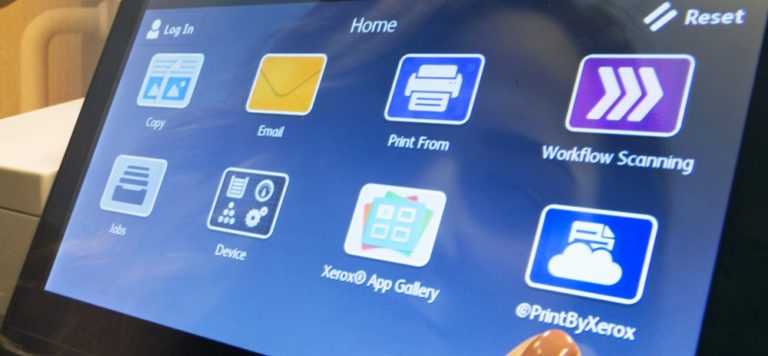By David Foulkes Jones
Gone are the days when customers suffered in silence, and kept their woes to themselves. In our hyper-connected world, all it takes is a tweet that goes viral, and their problem becomes yours. A big one.
So proactive customer care is about preventing issues before they happen. It’s also about finding ways to enhance the customer experience – without being asked. And about showing customers not just that you feel their pain, but that you’re actively trying to eliminate it.
It also makes good business sense: Proactive upstream fixes may mean spending a few dollars more, but can save costly calls to your contact center down the line.
Act First
Proactive customer care is any time you contact a customer on a service-related issue or take an action on their behalf before they contact you:
- Picking up churn signals and getting in touch to prevent a defection.
- Contacting customers before an anticipated service slow-down or interruption.
- Sending a note a week after purchase to make sure everything is okay.
- Asking about the customer experience after a holiday.
- Fixing a problem before they’ve noticed it.
In every case, the customer is now on the receiving end of a customer care experience, instead of being the instigator.
You Win, They Win
The benefits of proactive customer care are clear and compelling:
- Lower costs, as you reduce the number of inbound calls and the complexity of resolution.
- An improved customer experience, which is really important when 88 percent of businesses believe they deliver good customer service, and only 8 percent of customers do. (Source: Zombie Loyalists, Peter Shankman)
- A competitive advantage in a market where cost is race to the bottom and service is the only differentiator.
- Greater customer loyalty, as customers appreciate your efforts and feel more valued.
That last one is a big one. Because reduction in customer churn is the Holy Grail of customer care.
We all know that retention is far easier and less costly than acquisition. Wireless carriers, for example, calculate their gross cost per subscriber addition to be anywhere from $275 to $425. And it takes 12-16 months to recoup that cost. (Source: Yankee Group)
And if you need another reason, here’s one: A 5 percent reduction in defection can lead to more than 25 percent increase in profitability. (Source: Leading on the Edge of Chaos, Emmet Murphy and Mark Murphy)
The Three A’s of Customer Care
The market has changed, with tough economic times, an omnichannel world, rising customer expectations, and increased competitive pressure.
Customer Care needs to change too. And there are three A’s – Analytics, Artificial Intelligence and Automation – that can help it do just that.
Back to Basics
So how does all this work? What’s actually happening when you shift from reactive to proactive?
First, you’re anticipating and addressing customer needs before they become inbound issues. You’re also controlling the conversation, the tone, the flow and the outcome. That’s especially important in the social age, with problems just a click away from going viral.
But it’s more than that. You’re also moving away from transactional to relationship management. You’re focusing on Customer Lifecycle Marketing, so your efforts are joined up and make more sense – to you and them.
It’s also basic human psychology: You get out of any relationship what you put into it. Each contact makes a customer “stickier” as you create a bond. And that in turn creates customer loyalty. A company that turns up and shows it cares is just like a friend who does the same. You stay on the radar. People deal with people, and the human touch makes all the difference.
Proactive, Personal and Powerful
Proactive customer care could be as simple as a wireless carrier calling up a customer and recommending a better plan based on their usage. Or telling them about an offer that they qualify for.
It could even be just a call or an email to float an idea: “We’re looking at launching a new service. What do you think?” It’s simple but effective customer involvement, allowing you to gather knowledge and gain insight.
But here’s the thing: You need to know your customers first. And lots of companies don’t. They lack the tools, the time and the analytics. They spend too much time on basic, repetitive tasks and never get the opportunity to take a step back and look at the big picture.
And yet the tools are there.
Artificial intelligence is getting more and more sophisticated, analyzing and learning from human interaction. Social media monitoring is now state of the art, letting organizations see breaking issues, emerging trends and potential opportunities. And that’s really important when the conversation is out in the wild and you’re no longer in control.
Up, Up and Away
Some companies really get proactive care. Airlines proactively rebook customers on later connections when their flights are delayed, because they know that the alternative is barely controlled chaos.
But even their performance is patchy. When United had an IT shutdown in early July, their Twitter account went silent instead of going into overdrive. Information came from passengers, journalists and the FAA. But not from United. And yet this was the airline that held a connecting plane for a passenger so he could get to his dying mother in time – a shining example of getting it right.
Proactive customer care relies on the three T’s: tools, training and timing. And sometimes, timing is everything.
As it was when Morton’s steak house saw a tweet by customer service speaker and author Peter Shankman just before he boarded a plane in Tampa. They pulled out all the stops to deliver a Porterhouse steak on his arrival at Newark. He was knocked out by the service, tweeted to his 100,000 followers and wrote a blog post entitled The greatest customer service story ever told, starring Morton’s steakhouse.
So great service and excellent PR. But it required fast thinking and even faster action. Not to mention last-minute tux hire.
From Here to There
In the age of social media, review sites, forums and empowered customers, proactive customer care is no longer a nice-to-have. It’s the baseline for any company that wants to survive in a fiercely competitive market.
It’s not an isolated phenomenon. It’s part of a bigger picture, in which customer care moves from a voice-centric, single-channel industry to an automated, lifecycle-management, omnichannel world. Where customer experience trumps cost, and where relationships trump transactions.
Doing nothing is not an option because, by 2020, customer service will overtake price and product as the key brand differentiator. (Source: Walker Information)
So the time to start getting it right is now.
Subscribe to this blog and receive email updates when we publish a new article.



